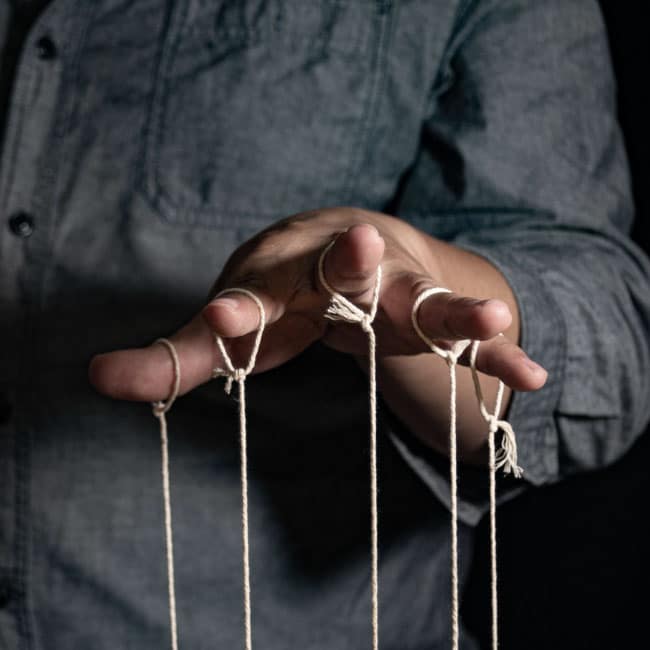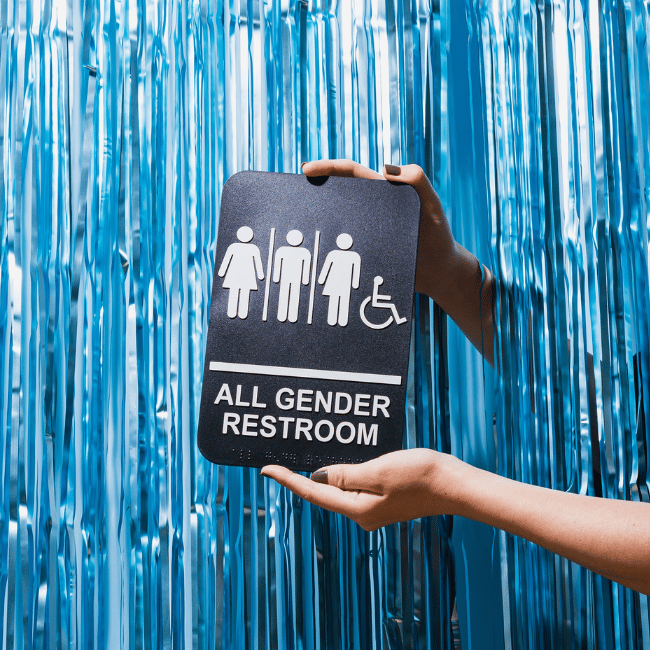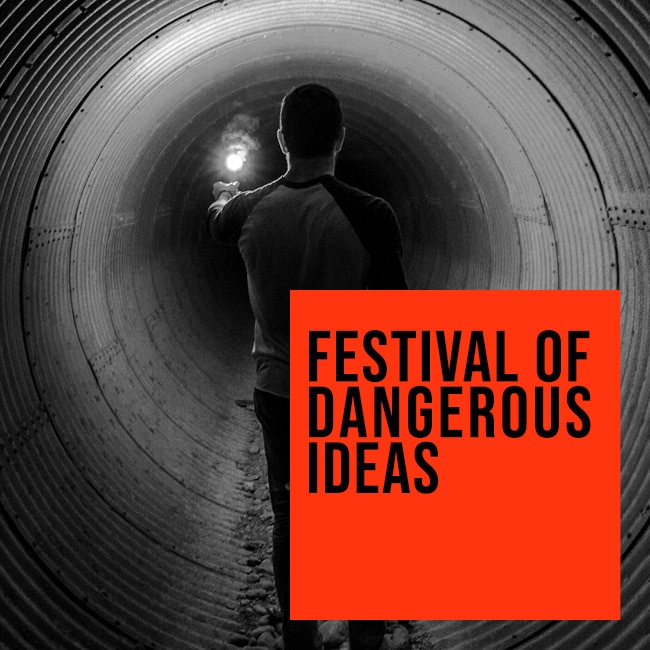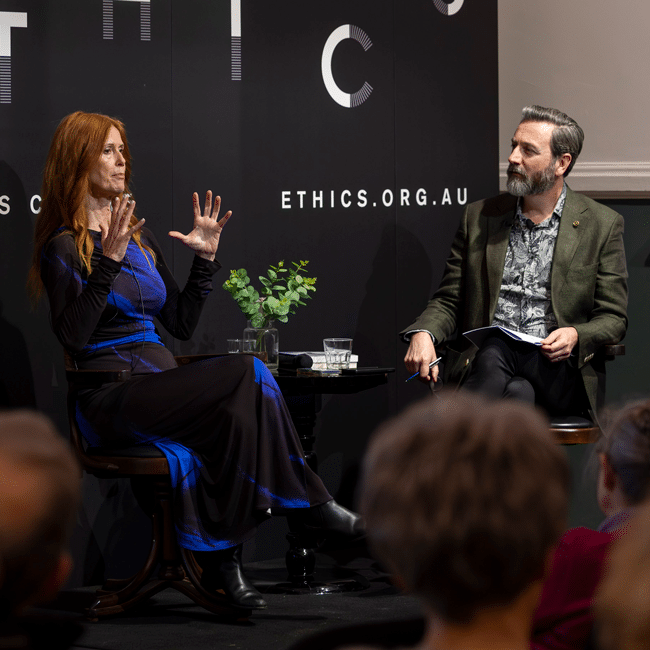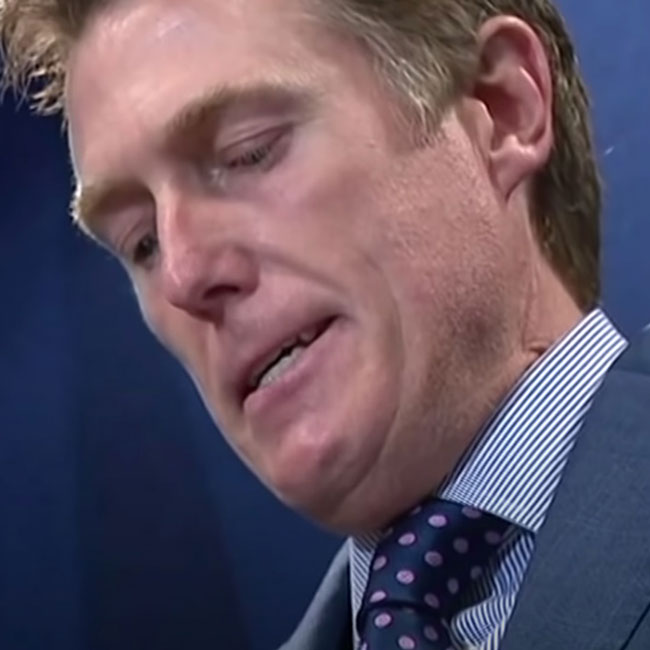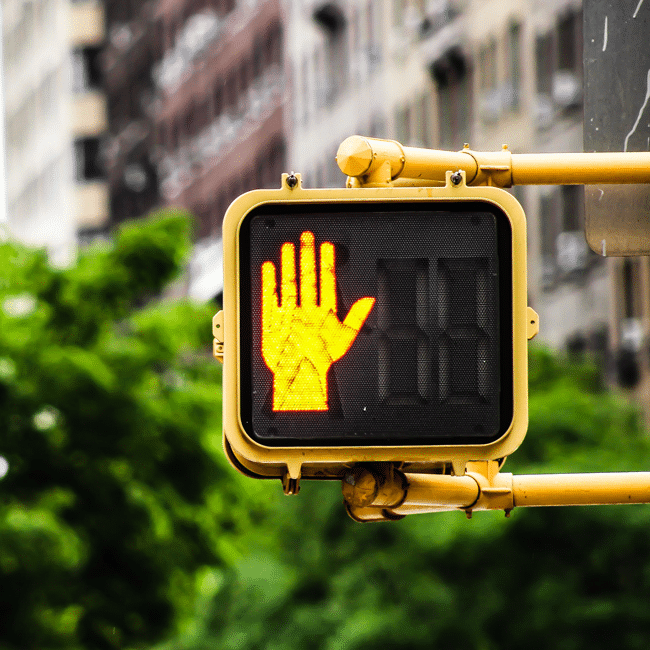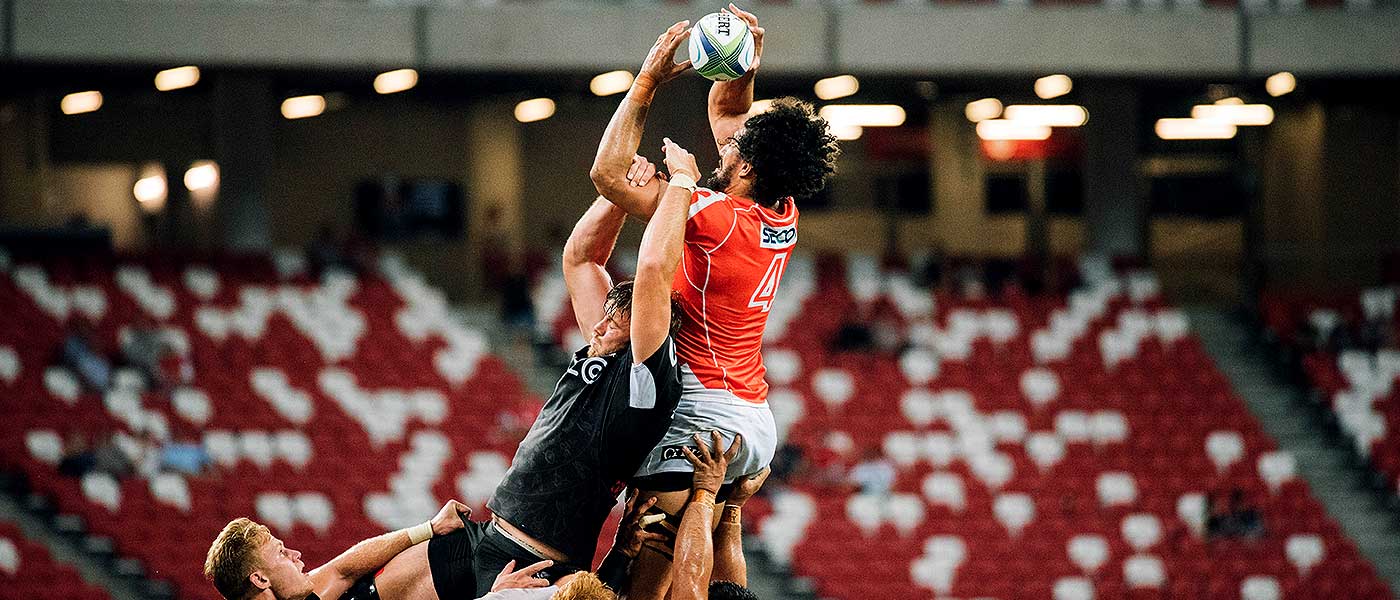If you don’t like politicians appealing to voters’ more base emotions, there is something you can do about it
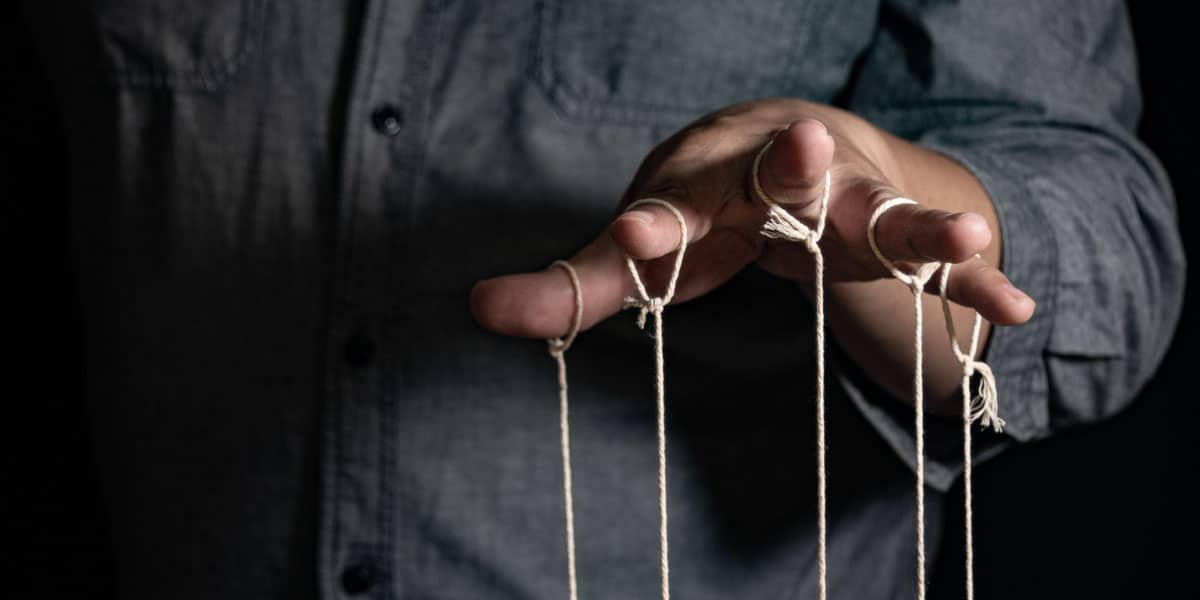
If you don’t like politicians appealing to voters’ more base emotions, there is something you can do about it
Opinion + AnalysisPolitics + Human Rights
BY Simon Longstaff 5 MAR 2025
The way politicians attempt to garner our votes during an election campaign reveals a great deal about what they think of us as people.
Consider how many politicians try to shore up their standing in the polls by tapping into the emotions of fear and greed. Of the two, playing on personal and communal fear often takes precedence — not least because it is such an easy path to follow. A skilled politician will know how to exploit vulnerability by highlighting what is precarious about our situation and then offer a solution. They will identify an “enemy” who means to cause us harm, and then claim that only they can keep us safe. They will accentuate the differences between “us” and “them” so that they can present themselves as being “on our side”.
The trick is to start with a grain of truth. People are vulnerable. There are some who mean us harm. The community is often divided across boundaries of class, religion, culture, ethnicity and ideology. Next, take that grain of truth and turn it into a mountain that dominates our view of the world. Having ramped up the fear, the skilled politician then offers to come to the rescue — this time eliciting a sense of relief, even gratitude.
An appeal to greed is less dramatic — and often less potent. It is based on the assumption that most people will put self-interest ahead of a concern for others. As Jack Lang, the former Premier of New South Wales, once put it to a young Paul Keating, “Always back the horse named self-interest, son. It’ll be the only one trying.” So, a politician will often promise some kind of personal benefit — usually not to those who might most need what is on offer, but to those whose votes will deliver political victory.
But of course, there is nothing inevitable about politicians appealing to emotions like fear and greed. Such appeals have become part of the political playbook for one simple reason: they work. Campaign strategists are, after all, the ultimate pragmatists, and they would not routinely employ the tactics they do unless they had good reason to believe that they will prove successful.
The message we receive from politicians who resort to such tactics is that they do not believe voters are able to rise above what is base and ignoble.
Which is to say, they do not think of us capable of responding, with equal vigour and commitment, to a style of politics that appeals to something more noble in our character. Indeed, even when the negative tactics work with us, even if we succumb to fear or greed and cast our vote for those who appealed to the lowest common denominator, many of us are left feeling somewhat debased. The persistent question remains: “Is that really all that you think of us? Wasn’t there anything better in us to which you could have appealed?”
That is a very fair and serious question. The core tenet of a democracy is that all power and authority derives from “the people”. But what will be the quality of our democratic polity when the mirror held up to the community by its political leaders presents such a wretched image?
I do not pretend that Australians are an especially virtuous people. We are just as flawed as others — neither more nor less. Which means there are ample opportunities to appeal to what Abraham Lincoln called, in his first inaugural address, “the better angels of our nature”. Why is it not a staple of political discourse to offer a vision of shared prosperity? Why not dwell more on common security based on an account of social cohesion as a positive good, rather than as an antidote to division?
This style of politics — one grounded in hope and inclusion — is much harder work than the politics of deficit and division. But I think the effort is worth making because, at the end of an election cycle, we should be left feeling better about ourselves — both as individuals and as a society. That positive effect should be what every politician seeks to generate. Yes, they want to win, but I would hope it is not “win at any cost”. The ends never justify the means, in the crude sense some people argue to defend the indefensible.
Within a democracy, the outcome of elections ultimately lies in the hands of citizens. We are all equal at the ballot box. We are all able to weigh up the merits of what the candidates for public office put before us. In doing so, I think we should look behind the slogans to consider what underlying message is being conveyed. Do those seeking power hold us in high regard? Do they demonstrate that they recognise the good in us to which they then appeal? Or is their underlying message that they hold us in contempt — diminishing us even as they harvest our vote?
This article was originally published by ABC religion and Ethics.
Image by Jun Li / Alamy Stock Photo
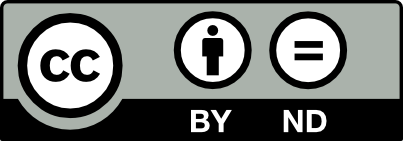
Ethics in your inbox.
Get the latest inspiration, intelligence, events & more.
By signing up you agree to our privacy policy
You might be interested in…
Explainer
Politics + Human Rights, Relationships
Ethics Explainer: Gender
Opinion + Analysis
Politics + Human Rights, Science + Technology
Is it right to edit the genes of an unborn child?
Opinion + Analysis
Politics + Human Rights
Billionaires and the politics of envy
Opinion + Analysis
Health + Wellbeing, Politics + Human Rights
Constructing an ethical healthcare system
BY Simon Longstaff
Simon Longstaff began his working life on Groote Eylandt in the Northern Territory of Australia. He is proud of his kinship ties to the Anindilyakwa people. After a period studying law in Sydney and teaching in Tasmania, he pursued postgraduate studies as a Member of Magdalene College, Cambridge. In 1991, Simon commenced his work as the first Executive Director of The Ethics Centre. In 2013, he was made an officer of the Order of Australia (AO) for “distinguished service to the community through the promotion of ethical standards in governance and business, to improving corporate responsibility, and to philosophy.” Simon is an Adjunct Professor of the Australian Graduate School of Management at UNSW, a Fellow of CPA Australia, the Royal Society of NSW and the Australian Risk Policy Institute.
Feeling rules: Emotional scripts in the workplace

Feeling rules: Emotional scripts in the workplace
Opinion + AnalysisBusiness + LeadershipHealth + Wellbeing
BY Elena Walsh 26 FEB 2025
Meta CEO Mark Zuckerberg recently lauded the virtues of company cultures that can ‘celebrate the aggression’. The comment sparked backlash, with many commentators arguing that ‘no one thrives in an aggressive environment’ and that anger and pride have no place at work.
There are many reasons this topic is highly charged. One is that people, on the whole, tend to dislike being told what to feel (even more than they dislike being told what to do).
The aversion is not difficult to explain. Long before the development of the neocortex, our ancestors relied exclusively on the limbic brain, which prompted fast, instinctive responses to a quickly changing and often treacherous physical and social landscape. We fought in anger, ran from danger in fear, and withdrew in disgust from contaminated food. We used our emotions to navigate the world and express our needs, which kept us alive. So to be told not to feel what we feel, and act accordingly can be perceived as a threat to our ability to act adaptively to life. And it is this adaptive ability that constitutes, in part, our sense of being autonomous and free.
And yet, as we mature, we learn to reign in our emotions for the sake of the collective. We live and operate within workplaces and other social institutions that ask us to limit our emotional repertoire to support the collective. Freud thought the laws binding civilised societies required us to ‘sacrifice [our] instincts’, in order to ‘leave no one […] at the mercy of brute force’. Civilisation is a trade-off: it imposes necessary restrictions on freedom that no-one can escape, in turn offering protection from harm and mutual reciprocity.
So, what emotions should we express in the workplace? And should we suppress spontaneous emotional expression in order to conform to emotional scripts?
An emotional script is a bit like a script for a scene in a play. It prescribes a set of emotions appropriate to a given workplace culture, setting, or situation, and asks us to play the role. A basic ‘professionalism’ script, for instance, which exists in most workplaces, asks employees to remain calm and composed, regardless of stress or frustration.
Many workplace scripts have obvious value, such as the script for showing appreciation and gratitude after someone gives a presentation, or using warm salutations in an email.
Others carry potential for harm. The ‘customer-facing pleasantness’ script demands frontline staff treat customers in a friendly and accommodating way, regardless of their true feelings. Many companies train and require frontline workers to display smiles when with customers, some even insisting that these smiles be ‘real’ and not fake. The demand to show a ‘real’ smile whenever interacting with a customer, even if they are rude or aggressive, demands significant emotional labour. Constantly suppressing true emotion to conform with an emotional script is, in essence, method acting. It takes energy.
We can all engage in (and perhaps even enjoy) some method acting from time to time. But too much leads to burnout and, in severe cases, can harm mental health. The British paediatrician and psychoanalyst Donald Winnicott used the term ‘false self’ to describe rigid and pervasive patterns of emotional masking in which a person loses track of the difference between their ‘real’ self and their mask. Winnicott thought the false self was an adaptation to traumatic early caregiving environments in which genuine emotional expression was unsupported or punished, leading individuals to develop a protective façade.
Of course, masking in the workplace as an adult is much less harmful, both because a mature adult is less vulnerable than a child, and also because an adult can ‘take off’ their mask when they leave work.
Nonetheless, excessive emotional labour can still cause harm, and studies of marginalised groups in the workplace attest to this. Many studies show that women are often expected to conform to a ‘nurturing and motherly’ emotional script when interacting with male colleagues or bosses.
Another well-studied phenomenon is the pressure faced by Black men and women to repress their anger, even in situations that clearly warrant it, in order to not conform to the stereotype of the ‘angry Black man [or woman]’. Studies have found that Black women frequently experience traumatic stress symptoms in the workplace due to the strain of conforming to emotional scripts that forbid anger and encourage nurture. These are consequences of the felt need to mask too often and too well, even whilst experiencing microaggressions or more blatant forms of discrimination. Studies have also shown that workplaces that encourage traditionally ‘masculine’ traits are tied to burnout, high worker turnover, anxiety, and poor wellbeing in both male and female workers (and regardless of race).
Balancing the script
While some degree of emotional restraint might be necessary, it seems that too much can be harmful. How do we draw the line?
Freud’s claim that a healthy suppression of ‘instinct’ helps avoid ‘brute force’ was meant to describe how civilisation overcame the philosophy of ‘might makes right’. This philosophy claims that the basis for morality and social order is rightly and naturally set by the most powerful, not by principles of goodness, justice, or fairness. In other words, Freud thought that a reasonable amount of emotional repression would lead to mutual reciprocity and fairer outcomes, overcoming the domination of the less powerful by those with more.
In fact, the ‘professionalism’ script, understood in its original twentieth-century sociological sense, was not simply a common and expected workplace convention. Rather, it was seen as a powerful means to increase the stability and civility of social systems.
One answer, then, is that emotional repression is good when it supports ideals of justice and fairness, and not when it perpetuates oppression and marginalisation of individuals or groups.
Finding balance might require assessing situations as they arise, with an eye for whether individuals are being treated equally and fairly. This vigilance is important, given that we are in an age where more workplaces are beginning to explicitly prescribe emotional scripts, as well as conduct surveillance to ensure compliance.
An emotional script may be, in the end, a poor person’s substitute for true emotional intelligence, which provides us with the ability to flexibly deviate from and conform to prescribed scripts dependent on the situation at hand, and with a genuine concern for the common good. Acquiring this skill is difficult for all of us, but likely surpasses the rigidity of any single emotional ideal.

Ethics in your inbox.
Get the latest inspiration, intelligence, events & more.
By signing up you agree to our privacy policy
You might be interested in…
Opinion + Analysis
Business + Leadership
Is debt learnt behaviour?
Opinion + Analysis
Business + Leadership, Relationships
It’s time to take citizenship seriously again
Opinion + Analysis
Business + Leadership
Taking the bias out of recruitment
Opinion + Analysis
Health + Wellbeing
HSC exams matter – but not for the reasons you think
BY Elena Walsh
Elena Walsh is a lecturer in philosophy at the University of Wollongong, working across the philosophy of science and the science of emotion. She also has expertise in moral psychology and Buddhist and Asian philosophical traditions. Her current research examines the role of emotion in intelligent systems and the ethical governance of AI. Elena completed her PhD at the University of Sydney in 2020 and has previously held roles as a policy advisor for the NSW Department of Premier and Cabinet and as a researcher at UNSW’s Practical Justice Initiative.
When our possibilities seem to collapse

When our possibilities seem to collapse
Opinion + AnalysisPolitics + Human RightsSociety + Culture
BY Simon Longstaff 24 FEB 2025
In recent years, I have had an increasing number of conversations with people who feel overwhelmed by world events.
They describe the world as wracked by multiple crises of a magnitude such that efforts to reform or repair what is broken is simply futile. This attitude is not confined to those who are poor, oppressed or marginalised. This particular feeling seems to be divorced from personal circumstances – with even the privileged experiencing the same grim outlook.
Especially troubling is the fact that this feeling has been building, despite all of the evidence that Earth has become, on average, a safer, more peaceful place. A decreasing percentage of people live in abject poverty. Infant mortality rates are declining. There are fewer famines and more to eat. As a whole, the ‘four horsemen of the Apocalypse’ have been left playing cards in the stable.
Of course, specific individuals and groups still suffer the full panoply of ills that can afflict the human condition. But, overall, things have been getting better at the same time that people have come to believe that the world is a place of deepening doom and gloom.
One can easily think of an explanation for the divergence between reality and perception. First, is the power of individual stories. A compelling narrative of one person’s suffering can easily be taken as representative of the whole. It’s the same general phenomenon that leads us to feel better whenever we encounter a narrative in which the ‘underdog’ triumphs over the more powerful rival. These figures are swiftly ‘universalised’ to the point that any one of us can see our own possibilities reflected in that of the protagonist. So, when our stories tilt from the positive to the negative we are likely to see our view of the world take on a pessimistic hue.
This brings us to the second reason for this negative outlook. Unfortunately, the media (in all its forms) has ‘discovered’ that ‘bad news’ sells. Or to be more precise, bad news attracts and retains an audience in a way that positive news does not. The implications of this ‘insight’ have been grossly magnified by the emergence of social media – with its insatiable drive for eyes, ears, minds, etc. One of the most depressing stories I have heard, in recent years, is of a publisher that monitors every second of a story’s online life. The moment interest begins to flag, I am reliably advised, the instruction is to ‘bait the hook’ with something that implies ‘crisis’. So, what might properly be considered ‘troubling’ is elevated to the point where it feels like an existential threat posing a risk to all. Few remember the details when (almost inevitably) the more mundane truth emerges. What remains is the feeling – and facts rarely disturb established feelings.
These factors (and a host of others – too numerous to mention here) have combined to help generate a creeping sense that one might as well disengage and let the world go to hell in the proverbial ‘handbasket’. Let’s not bring children into a failing world. Let’s limit our attention to things within our span of control (not much). Let’s not vote – it’s pointless …
The deeply disturbing thing about all of this is that the temptation to withdraw because of the perceived futility of engagement gives rise to a self-fulfilling prophecy grounded in that great enemy of democracy; despair.
The truth of democracy (and markets for that matter) is that even the least powerful individual can change the world when working with others. Remarkably, we don’t even have to plan and coordinate for collective action to have a powerful effect. Indeed, one need not be ‘heroic’ (in the ‘Nelson Mandela’ sense) to be an author of momentous events. It’s just that you are unlikely ever to know when your decision or action tilted the world on its axis. Often it just requires a person to fall just a smidgen on the right side of a question. And when enough people do the same, there is progress.
Despair is the absence of hope that this is possible. It is a deceit that makes us fail – not because we never could succeed but because it destroys our belief in the possibility that we can be effective agents for change.
If we succumb to despair, then our possibilities collapse – not because we are powerless but because we believe ourselves to be.
Australia should aspire to be one of the world’s great democracies. It’s in our bones – dating back to South Australia that, in the late nineteenth century, brought into the world the first modern democracy in which all adults could not only vote but take up public office – irrespective of sex, gender, race or creed. For years, the secret ballot was known as the “Australian Ballot’. In 1900, Australia held more patents per head of population than any other country in the world. Yes, there were all the problems of colonisation, racism, sexism and a plethora of wrongs. And yes, we went backward for a while after Federation. But that reality did not give rise to despair.
Things actually can get better. Democracy is the vehicle for doing so; not because it demands so much of us as individuals – but because it demands so little. We just need to allow ourselves a small measure of hope to defeat despair. We need to take just a small, individual step forwards. Do this together, and nothing can stop us.

Ethics in your inbox.
Get the latest inspiration, intelligence, events & more.
By signing up you agree to our privacy policy
You might be interested in…
Opinion + Analysis
Society + Culture
David Lynch’s most surprising, important quality? His hope
Opinion + Analysis
Politics + Human Rights, Relationships
Ask an ethicist: do teachers have the right to object to returning to school?
WATCH
Politics + Human Rights
James C. Hathaway on the refugee convention
Explainer
Politics + Human Rights, Relationships
Ethics Explainer: The Harm Principle
BY Simon Longstaff
Simon Longstaff began his working life on Groote Eylandt in the Northern Territory of Australia. He is proud of his kinship ties to the Anindilyakwa people. After a period studying law in Sydney and teaching in Tasmania, he pursued postgraduate studies as a Member of Magdalene College, Cambridge. In 1991, Simon commenced his work as the first Executive Director of The Ethics Centre. In 2013, he was made an officer of the Order of Australia (AO) for “distinguished service to the community through the promotion of ethical standards in governance and business, to improving corporate responsibility, and to philosophy.” Simon is an Adjunct Professor of the Australian Graduate School of Management at UNSW, a Fellow of CPA Australia, the Royal Society of NSW and the Australian Risk Policy Institute.
Does your body tell the truth? Apple Cider Vinegar and the warning cry of wellness

Does your body tell the truth? Apple Cider Vinegar and the warning cry of wellness
Opinion + AnalysisHealth + WellbeingSociety + Culture
BY Joseph Earp 19 FEB 2025
Of all the snake oil salespeople who have dominated the wellness space, few have been as destructively, unsettlingly committed to the bit as Belle Gibson.
For a while, Gibson made her name on her own alleged suffering. A social media influencer, author, and wellness personality, she claimed to have been diagnosed with a horrifying assortment of cancers, from tumours in her brain, to tumours on her liver.
More than that, she claimed that these cancers were responding not to mainstream medicine, but to a wholefood diet. Gibson, a young parent based in Melbourne, was essentially arguing that she had found one of the cures for cancer.
Of course, she hadn’t. When it became clear that Gibson was not passing on some of the money that she had made from her successful cookbook and app to charity, as she promised, her tangle of lies began to fall apart. In fact, Gibson had never been diagnosed with cancer, as she admitted in a trainwreck interview with 60 Minutes, half an hour of television so actively unsettling that it is still seared into the mind of many of the Australians who watched it.
But even then, even when challenged, she never quite admitted the truth. In one memorable moment of the 60 Minutes episode, restaged in the recent Netflix miniseries Apple Cider Vinegar, Gibson is asked to define what “truth” is.
Her mumbly non-answer was taken as evidence that Gibson couldn’t stop lying, even when asked to respond to even the most basic of questions. But her inability to give a clean definition of truth cuts right to the heart of the wellness space – and, hopefully, teaches us how to stay clear of its worst impulses.

The whole truth
Traditional medicine and alternative therapies are constantly lobbied by the likes of Gibson and other wellness influencers, who are suspicious of the “objectivity” offered by mainstream medicine. Gibson, and other traditional medicine advocates like disgraced chef Pete Evans, point to science’s flaws – to the way that medicine messes up. This, they say, is proof that mainstream medicine can’t answer all our problems.
But these critiques of science are not just the domain of wellness influencers – they are also common in post-modern and pragmatist philosophy.
In his book Against Method, Austrian philosopher Paul Feyerabend threw chaos into the established notion of the scientific truth. According to Feyerabend, there is no such thing as the “scientific method” – no way to make the multitude of different ways to enact science appear streamlined and “correct.”
By contrast, Feyerabend advocated for an “anything goes” principle of scientific enquiry, arguing that scientists should follow whatever research paths seem particularly interesting to them.
According to him, science is not some way to get to the heart of the matter – to understand what is definitely, objectively true. Instead, he sees medicine as a way of understanding the world, an art form in the same way that painting a picture, or writing a poem, is a way of understanding the world.
In this way, Feyerabend echoes the work of pragmatist philosopher Richard Rorty. Rorty argued that there is no viewpoint that exists outside of context – no way to get “more objective”. We can’t ever see past who we are and where we are in time. We are constantly mired in context. A “viewpoint outside history” does not exist. Science isn’t a mirror that can be better polished, and eventually represent the world exactly as it is. The most we can hope for is some sort of established consensus, a bunch of subjective viewpoints that align with each other, rather than an objective reality.
Rorty and Feyerabend’s arguments do have some genuine pull to them. It is correct that science is always changing – that discoveries that seemed “objectively true” ten years ago get replaced and reordered. It is also correct that medicine mucks up, and that many are disenfranchised from mainstream forms of science because of the way it uses claims of objectivity like a cudgel, silencing all dissenters. As in, “this is true, and anything that goes against this is false.”
But if we agree with the likes of Feyerabend and Rorty, and do away with the mainstream “truth” provided by science, are we stuck with the likes of Belle Gibson? Does throwing away objectivity mean that we must put up with the liars, scammers, and fraudsters? Does it mean that Gibson really does have the same claim to the “truth” – a truth she could not even name?
The healing nature of balance
The short answer is, of course, no. If questioning the scientific method really did mean that Gibson, who definitely, plainly, simply lied – and made a great deal of cash off those lies, and the perpetuated suffering of those who believed her – then that questioning would be patently dangerous.
But, as with so many things, the answer lies in the acceptance of balance. We do not have to treat medicine as a new form of religion, with iron-clad rules that we dare not ever question. Nor do we have to completely, constantly reject all of its findings, and put up absolute falsehoods in their place.
Rorty was never advocating for the likes of Gibson. Even though he undid some of the foundations of objectivity, he was not arguing that we can do whatever we like, or believe whatever we like. One of his most important and practical ideas, as mentioned above, was the idea of consensus. Even if we take the postmodern approach that “objectivity” is a shaky concept, we can create a picture of what consensus is that gives us all the things we like about objectivity.
As in, consensus can be reached by scientists and doctors. These specialists have dedicated their lives to uncovering the best ways to heal and help our bodies. When enough of these specialists find a common way to heal and help, then we have reached consensus. Consensus has the force of objectivity – it has reasons to explain itself. It’s not just random. It’s not Gibson just making things up. It’s a way of saying, “this works, and a lot of people agree that it works.”
What separates this picture of consensus from “objectivity” and its potential harms, moreover, is that consensus can change. When new discoveries are made, they can be shared around specialists, who can alter what they believe. It’s not that they were “wrong” before. It’s that consensus is malleable, changeable, and ever in-flux.
Belle Gibson couldn’t define what the truth is. She used that messiness to exploit people, and to cause harm. But we can ever-so-slightly release our hold on objectivity, without becoming Gibson. And in doing so, we can embrace a modern medicine that does what it was meant to do: help people.

Ethics in your inbox.
Get the latest inspiration, intelligence, events & more.
By signing up you agree to our privacy policy
You might be interested in…
Opinion + Analysis
Climate + Environment, Health + Wellbeing, Society + Culture
The five biggest myths of ethical fashion
Opinion + Analysis
Business + Leadership, Health + Wellbeing
What your email signature says about you
Opinion + Analysis
Health + Wellbeing, Relationships
Exercising your moral muscle
Opinion + Analysis
Society + Culture
Save the date: FODI returns in 2020!
BY Joseph Earp
Joseph Earp is a poet, journalist and philosophy student. He is currently undertaking his PhD at the University of Sydney, studying the work of David Hume.
5 lessons I’ve learnt from teaching Primary Ethics

5 lessons I’ve learnt from teaching Primary Ethics
Opinion + AnalysisRelationships
BY Karina Morgan 18 FEB 2025
Each week, for 45 minutes, I sit down with a group of year two students and discuss ethics.
We’ll tackle an ethical concept or dilemma, typically in the form of a story, with questions designed to draw out deep discussion amongst the class.
The Ethics Centre established Primary Ethics as an independent not-for-profit in 2011, tasked with developing a curriculum and recruiting volunteers to run weekly ethics classes as an alternative in the scripture timeslot in public schools. They now deliver lessons to 45,000 children in 500 schools from kindergarten to year eight.
Classes are led by trained volunteers, who act as impartial facilitators. Our role is to model active listening and ask questions that build critical thinking skills and encourage collaborative learning.
For me, it feels like the most important gift I can give to the next generation. And, if I’m honest, I find I am learning in each and every class right alongside them.
Here are five lessons I’ve learned from teaching Primary Ethics this year:
1. Curiosity is the gateway to critical thinking.
Embracing curiosity is how we learn; it’s the driving force for growth, discovery, and innovation. The innate curiosity in children is a vital foundation for developing skills like critical thinking, empathy and thoughtful decision-making.
You see a curious mind doesn’t accept information at face value; it probes deeper, asking why, how, and what if? It fuels the critical examination of ideas, helps us to identify biases, to sort fact from fiction, and to consider situations from multiple perspectives.
I admire the unbridled curiosity of the students I teach. It’s contagious. As adults, we can get stuck in our routines and belief systems. We accept the status quo and stop exploring what’s possible.
2. There is power in saying “I don’t know”.
One of the most powerful moments this year came when a student asked a question I couldn’t answer. I took a breath and said, “I don’t know – what do other students think?”
And just like that, the room lit up. I had given the students permission to be knowledge holders and modelled the open-minded growth mindset we want to cultivate through ethics lessons. Since then I have witnessed so much more willingness to have a go from everyone in the room.
It turns out there’s a kind of magic in admitting you don’t have all the answers. Teaching ethics is not about being an authority; it’s about being a partner in figuring things out. Admitting you don’t know doesn’t make you weaker – it opens the door for connection and learning.
3. To disagree respectfully, we need to be open to learning from each other.
Nine-year-olds are full of opinions. But what also stands out to me is how open they are to new points of view, to listen to each other, even when they disagree. Recently, a student in my class said she disagreed with the person sitting next to her. That student smiled, said, ‘that’s ok’, and leaned into hearing her peer explain why. Imagine if we could cultivate that across the political divide?
Kids don’t assume the worst in someone who thinks differently – they assume they are trying their best, just as they themselves are. Watching them address and debate differing points of view without engaging in personal attack or any attempt to discredit each other is a beautiful reminder that respectful disagreement starts with empathy, assuming good intentions and willingness to learn from each other.
4. Psychological safety empowers new ideas, and even changes minds.
There’s a sense of psychological safety built through collaborative inquiry, because everyone’s ideas and questions are valid here. The kids thrive in the freedom it offers to explore, build on each other’s ideas, and even to change their minds.
When I started teaching this class two years ago, everyone was itching to have their turn, and to get the answer ‘right’. Now they have begun to really listen to each other – not just to respond, but to understand each other’s opinions.
This year there’s been instances where students have discussed feeling conflicted over a question, proposed merit across differing sides of a debate, and even changed their mind after listening to other points of view.
It’s a powerful reminder of how active listening can transform conversations. Making someone feel heard deepens trust, fosters empathy, and makes room for challenging conversations. It isn’t just a tool for learning; it’s a tool for connection.
5. Ethics in education can establish a resiliency for life.
Resilience, I fear, is a word that’s lost some of its charm for a lot of adults. Through ethics lessons I’ve been reminded that resilience isn’t the nefarious push through mentality or the ability to bounce back from a setback. It can also be staying engaged with challenging situations, even when the answers are messy or unclear. It’s regulating emotions, processing stress and being adaptable to change.
Ethics lessons are about grappling with tough questions, sometimes without any resolution. Nine-year-olds handle this better than you’d think, and certainly better than a lot of adults do. When there’s no clear answer, they meet the discomfort of uncertainty with curiosity and creative thinking.
Volunteer to become a Primary Ethics teacher and you’ll be helping children develop important skills for life. Find out more here.

Ethics in your inbox.
Get the latest inspiration, intelligence, events & more.
By signing up you agree to our privacy policy
You might be interested in…
Opinion + Analysis
Politics + Human Rights, Relationships
Why victims remain silent and then find their voice
Opinion + Analysis
Health + Wellbeing, Relationships
Seven COVID-friendly activities to slow the stress response
Opinion + Analysis
Business + Leadership, Relationships, Society + Culture
Extending the education pathway
Opinion + Analysis
Health + Wellbeing, Relationships
Are there any powerful swear words left?
BY Karina Morgan
Karina is a communications specialist, avid hiker and volunteer primary ethics teacher, with a penchant for the written word.
The near and far enemies of organisational culture

The near and far enemies of organisational culture
Opinion + AnalysisBusiness + Leadership
BY John Neil 13 FEB 2025
While an organisation might be judged by its profitability or reputation, it is ultimately defined by its culture.
Culture influences everything: individual and team performance, change management, and how the organisation navigates complexity and uncertainty. And when companies face ethical scandals or breaches, the root cause is often be traced back to cultural issues.
Culture isn’t just about employee engagement; it’s about how an organisation functions at its core. Yet culture is notoriously difficult to define and measure. Turning to traditional methods like employee surveys, pulse checks, or 360-degree reviews can be insightful, but they rarely provide a complete picture. A more profound understanding lies beneath the surface by identifying and understanding the role an organisation’s “shadow values” play in shaping their culture. These are the implicit, unspoken attitudes and beliefs that profoundly influence behaviour, often in ways that are not immediately apparent, but which are often key drivers that explain the ethical challenges an organisation experiences.
Shadow values: The invisible force shaping culture
By recognising and understanding shadow values, organisations can make meaningful improvements, aligning both individual and collective behaviours with the company’s goals.
Corporate values, such as collaboration, integrity, or innovation, are stated, documented, and promoted. However, even companies with admirable stated values can experience significant ethical failures due to the existence of implicit, shadow values that run counter to their formal values.
At their worst, shadow values and principles run in opposition to official values. At their best, shadow values provide a nuanced expression of what an organisation actually values. Either way, they are an essential element of identifying and measuring an organisation’s actual operating culture.
The positive side of shadow values and principles can be demonstrated by a financial services company The Ethics Centre worked with where “putting members first” was identified a shadow principle. This principle was so deeply embedded that when employees faced ambiguous situations where decisions and actions weren’t guided by clear policies or procedures, they defaulted to acting in the best interests of their members, even though this value was not formally part of the organisation’s stated principles.
On the other hand, shadow values and principles can also have a negative impact on an organisation’s culture. Another company we worked with had the common shadow principle of ‘shareholders matter most.’ As a publicly listed company providing essential services, providing value and managing and responding to multiple stakeholders was part and parcel of day-to-day business. However, this shadow principle become a default when trade-offs invariably had to be made between various stakeholder interests. This engendered a high level of cynicism and disaffection with staff who heard a lot about the importance of customer service and the value of staff but other actions – workload, resourcing, remuneration, and informal communication from managers – led them to infer that they existed only insofar as they met shareholder’s interests.
Near and far enemies: A Buddhist lens
To better understand and identify the impact of shadow values and principles on an organisation’s culture we can borrow the concepts of near and far enemies from Buddhism.
In Buddhism, the Four Brahmavihārā (compassion, loving-kindness, empathetic joy, and equanimity) represent the highest virtues humans should cultivate. Each of these virtues has a “far enemy,” which is an obvious opposite, and a “near enemy,” which closely resembles the virtue but is actually a distortion.
For example, the far enemy of compassion is cruelty – easily identifiable and universally understood as negative. And because it is easily identifiable and its manifestations and impact are readily recognised, it can be directly addressed.
The near enemy, however, is pity. Pity masquerades as compassion, superficially appearing to embody the traits of compassion. However, this is only a superficial resemblance as pity creates a sense of distance or condescension, because it stems from feeling sorry for someone rather than genuinely empathising with their experience. Pity lacks the connection and motivation to act that true compassion entails.
The near enemies in organisational culture
This concept of near and far enemies is incredibly helpful when diagnosing the shadow values that can function as root causes of organisational culture failings.
Just as it is in the case of the Brahmavihārā, while the far enemies of a company’s values are easy to spot and address, the near enemies are more insidious, because they masquerade as positive behaviours, and as such they exercise a disproportionate impact on people’s decision making and actions.
In an organisation The Ethics Centre worked with, “collaboration” was codified as a core company value. The far enemy of collaboration is competition, which is relatively easy to identify. If employees begin hoarding information or undermining one another, it’s clear that competition has taken root, supplanting the value collaboration and steps can be taken to address it.
However, competition wasn’t the root challenge for this company; it was harmony, a near enemy of collaboration. While harmony seems positive, it can manifest as a reluctance to engage in constructive conflict or make difficult decisions.
In the case of this company, a large incumbent experiencing organic year on year growth, their strategic challenge was shifting the culture to be one that was more responsive, innovative and adaptable to change. However, harmony as a shadow value was so deeply embedded as a shadow value that employees avoided conflict at all costs. Decisions were often delayed, and consensus-driven processes became bureaucratic, impeding the company’s ability to be agile and responsive to the changing environment and future competitive pressures, with innovative ideas often deferred.
Another example comes from a large financial services firm that codified “excellence” as a core value.
While the far enemy of excellence is easily and readily identifiable as mediocrity, it played little role in explaining some of the foundational ethical challenges the company was facing. Instead, it was ‘success,’ the near enemy of excellence, which was a core driver of cultural misalignment. ‘Success’ can give the appearance of excellence, however while excellence is about high standards of consistent performance and achieving great results through effort and learning, success had a singular focus on achieving results for their own sake, regardless of the means by which those results were achieved.
This near enemy generated a range of systemic organisational challenges including:
- An increasingly competitive internal environment – described by many staff as ‘dog-eat-dog’ resulting in people avoiding senior appointments.
- A proliferation and reliance on individual sales targets/performance payments, which promoted a highly competitive work environment which undermined teamwork and mutual accountability.
- Competing KPI’s that weren’t aligned across the business, undermining integrity in an attempt to get sales or outdo other teams to achieve different KPIs.
- Withholding information for internal competitive advantage – business units across the company did not disclose information or actively withheld it out of self-interest.
Combatting the near enemies
A company’s culture is complex, influenced by both visible and invisible forces. While explicit values like collaboration or excellence are important, it’s the shadow values operating beneath the surface that often have the greatest impact on behaviour. By understanding the near and far enemies of their values, companies can better align their culture with their strategic goals, fostering an environment that supports both individual and organisational success. The challenge lies in identifying these shadow values and addressing them before they become barriers to progress.
The Ethics Centre’s new program, Teamview can help organisations and teams of any size or ambition explore how their culture operates in practice, identify their strengths and chart a roadmap to closer alignment with their purpose and values. For more information contact consulting@ethics.org.au

Ethics in your inbox.
Get the latest inspiration, intelligence, events & more.
By signing up you agree to our privacy policy
You might be interested in…
Opinion + Analysis
Science + Technology, Business + Leadership
3 things we learnt from The Ethics of AI
Opinion + Analysis
Business + Leadership, Climate + Environment
The business who cried ‘woke’: The ethics of corporate moral grandstanding
Opinion + Analysis
Science + Technology, Business + Leadership, Society + Culture
AI and rediscovering our humanity
Opinion + Analysis
Business + Leadership
Why the future is workless
BY John Neil
As Director of Education and Innovation at The Ethics Centre, John collaborates closely with a talented team of specialists and subject matter experts to shape the tools, frameworks, and programs that drive our work forward. He brings a rich and varied background as a consultant, lecturer, and researcher, with expertise spanning ethics, cultural studies, sustainability, and innovation. This multidisciplinary perspective allows him to introduce fresh, thought-provoking approaches that energise and inspire our initiatives. John has partnered with some of Australia’s largest organisations across diverse industries, to place ethics at the heart of organisational life. His work focuses on education, cultural alignment, and leadership development to foster meaningful and lasting impact.
Ethics Reboot: 21 days of better habits for a better life

Ethics Reboot: 21 days of better habits for a better life
Opinion + AnalysisHealth + Wellbeing
BY The Ethics Centre 12 FEB 2025
Many of us know how easy it is for our New Year resolutions to fail. And that’s ok, we’re only human. But how do we bring about change, if we want to?
For many people, the start of a new year is a time to make resolutions. For others, it’s a time to reflect on how to make the world a little better by becoming a little better as a person.
Unfortunately, for the majority of people, our commitment to change often fails and the gap between our intentions and actions can feel insurmountable. The Ethics Centre’s Director of Innovation and Education, John Neil says this is because, well, we’re human beings. He offers at least three factors behind this:
- We overestimate the power of ‘willpower.’ Often linked to adjacent concepts like resilience and impulse inhibition, the long-standing belief in psychology is that willpower is a finite resource and people have varying reservoirs of it to draw on. The belief was that by bolstering our willpower we’re better able to attain our goals and those that don’t achieve their goals lack willpower. Unfortunately, it’s more complicated than that. Our ability to maintain choices and attain goals is as much about situational context, genetics, and socioeconomic standing as it is about individual psychological traits.
- As a result, any significant behaviour change requires long-standing practice, environmental changes and thoughtfully designed behavioural cues to create pathways of reinforcement to form new habits. In short, even the simplest resolutions require habitual practice.
- Most resolutions are goal-focused – stop smoking, lose weight – so they take on instrumental importance, meaning they focus exclusively on achieving an end state or outcome. With the high difficulty in achieving these outcomes resolutions can become self-defeating – the end becomes the goal rather than a focus on the motivating reason that inspired the goal.
That’s not to say that resolutions are a bad thing. We are hard-wired to demarcate life into phases. Birthdays, seasons, events, and the change of year are all relatively arbitrary events but are full of symbolic significance. They are moments that matter because we invest these occasions with meaning. They can provide a much-needed pause in the busy and difficult aspects of life to reflect and reassess what’s important to us.
So, how can we reset to focus on what we want more of in our lives?
The Ethics Centre has developed Ethics Reboot, a new, free, online 21-day challenge designed to create better habits.
Rather than feeling the pressure to write down a long list of goals, that have little chance of sticking, the course asks you to think instead about the qualities you’d like to cultivate. What qualities for you express the best aspects of a life well lived? Which of those would you choose to have more of in your life?
Some philosophers refer to these qualities as virtues – those behaviours, skills or mindsets that are worthy to be regarded as features of living a good life. Wisdom, justice, and courage were on Aristotle’s shortlist.
Rather than setting goals like reading more books or spending less time on my phone – think instead of the quality you are calling more of into your world – like being curious, courageous or compassionate.
Ethics Reboot provides you with one new quality or virtue to focus on each day for 21 days. Each daily challenge will give you guidance, motivation and inspiration to bring that quality into your every day.
In the midst of busy lives – and an increasingly tumultuous world – the challenge of the course is to carve out a few minutes each day to learn something new, put it into practice and reflect on it’s impact in your life. The result? Creating a new habit of daily self-reflection that might just help kick-start new ways of thinking, being and doing life that little bit better.
The course kicks off from when you sign up and lasts for 21 days – just enough time to develop some fresh new habits. You can join by signing up on our website.
Each day you’ll receive:
- A daily email explainer introducing you to a new virtue
- A guided activity to help practice what you’ve learnt
- A reflection exercise to build your ethical muscle and integrate the virtue into your everyday
In a time where many aspects of life can feel tough, focus on what you can control. And you might just see that resolution through.
Take our 21-day challenge and sign up for Ethics Reboot here.
Ethics in your inbox.
Get the latest inspiration, intelligence, events & more.
By signing up you agree to our privacy policy
You might be interested in…
Opinion + Analysis
Health + Wellbeing, Society + Culture
The right to connect
Opinion + Analysis
Health + Wellbeing, Society + Culture
Alpha dogs and the toughness trap: How we can redefine modern masculinity
Big thinker
Health + Wellbeing, Politics + Human Rights, Relationships
Big Thinker: Judith Butler
Opinion + Analysis
Health + Wellbeing, Relationships
Australia’s paid parental leave reform is only one step in addressing gender-based disadvantage
BY The Ethics Centre
The Ethics Centre is a not-for-profit organisation developing innovative programs, services and experiences, designed to bring ethics to the centre of professional and personal life.
Is every billionaire a policy failure?

Is every billionaire a policy failure?
Opinion + AnalysisPolitics + Human Rights
BY Tim Dean 29 JAN 2025
Is it fair that some people have more money than they can possibly spend while others are struggling to pay for essentials? It depends on what you mean by “fair”.
There’s never been a better time to be a billionaire. An Oxfam report released last week reveals that billionaires around the world have added a tidy $3.2 trillion to their wealth in 2024 alone. To put that in context: on average, each billionaire expanded their wallet by 3.2 million bucks every day over the last 12 months. That’s a tidy $400,000 an hour, or over 6,000 times the median hourly rate.
If you believe that innovation and hard work ought to be well rewarded, you might not be perturbed by these numbers. Except that the Oxfam report found that around 60 percent of the wealth captured by billionaires didn’t come from their labour, but was handed to them via an inheritance, or was secured through cronyism, corruption or their ability to exert monopoly power. So, there’s also never been a better time to have ultra-rich parents, or to have enough power to tilt the playing field in your favour.
Meanwhile, millions of hard-working people are struggling with cost-of-living pressures while their wages have stagnated. It’s probably no surprise that the phrase “every billionaire is a policy failure” – coined in another Oxfam report from 2023 – is having another surge in popularity.
But is the existence of billionaires itself a bad thing? Or is the existence of poverty the real problem? Should we change the way our economy works to make it impossible for someone to accrue that much money and power? Should we spread some of that wealth around to people who didn’t happen to be born with wealth and privilege?
These are not new questions. Ever since human societies started to accumulate wealth, inequality has been a hot topic for philosophers. But questions about inequality are fundamentally questions about fairness. The problem is that there are different ideas about what is fair.
Just deserts
One way to think about fairness is in terms of what someone deserves. Intuitively, if someone is talented, works hard and produces things that other people want, then they ought to be rewarded for doing so. A society that operates this way is often called a “meritocracy”.
This approach is often used to justify the vast wealth accrued by billionaires; presumably they’ve earnt their wealth because they’ve worked harder and smarter than most, and produced things that society wants or needs. And, on the flip side, many people assume that someone who’s living in poverty must be lazy or they made some dumb decisions, so they deserve their lot too.
But things aren’t so simple. Is it talent that we’re rewarding? Or is it effort? Or one’s contribution to society? Because what someone deserve differs depending on which we focus on.
If we focus on talent, then it’s clear that the world isn’t a level playing field. Some people are genetically endowed with higher intelligence, imagination or tenacity, or they’re born into a family that can afford a top-class education, all of which can give that person a huge boost to their talent. And, if they haven’t earnt any of those advantages, we might be reluctant to say they’ve earnt the disproportionate benefits that accrue because of them.
If we focus on effort instead, then the harder someone works, the more they deserve in return for their labour. Setting aside the question of whether tenacity is to some degree genetic, by this logic, someone who works long hours doing two jobs – as do many people to make ends meet – ought to be paid more than someone who earns a passive income from huge investments or a trust fund, let alone the significant proportion who were just handed their fortune.
Perhaps we should focus on contribution instead. Not all work is created equal. Some work only benefits the worker rather than society as a whole, and some is outright destructive or harmful. That brings us to the idea that people ought to be rewarded for what they offer society as a whole. No doubt, many billionaires own or head companies that produce things that people want. But is their personal contribution to society proportionate to the huge salaries they demand or the value of their share portfolio? Is a CEO really contributing more than hundreds of workers who actually produce the products and services? Many people would say no.
There are also many people performing essential jobs, like nursing, teaching and aged care, who are paid a lot less than people who just shuffle stocks around or who produce things like cigarettes or fast food, which are known to cause harm.
And there are plenty of people living in poverty who made all the right decisions in life but ended up unlucky. They’ve worked hard, taken risks – as all good entrepreneurs do too – and it just didn’t pay off, or they were struck by some illness or disability that prevented them from hitting the big time.
Libertarianism
There is another avenue of argument that has been used to justify the wealth of billionaires: libertarianism. American philosopher Robert Nozick argued that people have a fundamental right to own and trade property, and as long as they do so according to principles of justice, then they can accumulate as much as they want. In fact, taking someone’s property away and giving it to someone else, such as through taxation and welfare spending, is unjust.
Nozick’s argument harkens back to one offered by the English philosopher John Locke. Locke argued that raw natural resources, like land or minerals, start off belonging to no-one, and while they’re left idle, they’re worth nothing. But as soon as someone claims some natural resources (provided there’s still some left for others) and works or improves them to produce value, then they deserve to keep that value.
The problem is whether those who have amassed great fortunes today actually acquired their original property justly.
If it turns out that the property or resources they are using to generate wealth were appropriated from others, such as through conquest or colonialism, or if others were not given the same opportunity to put a fence around their own bit of nature, then the billionaires have received an unjust and unfair advantage.
Egalitarianism
If it’s the case that the world isn’t a level playing field, then perhaps we should focus less on what people currently have and do, and focus more on what they are owed as human beings. This brings us to egalitarianism. The most radical version states that every person, having fundamentally equal moral worth, has an equal right to share in what their society produces. According to this view, then everybody would have basically the same amount of wealth at all times.
However, this might not feel satisfactory if it means that people get the same amount regardless of whether they work hard or not at all, or whether they contribute to society or just laze around the beach.
Economists have also argued that a world where everyone has the same amount of stuff would be substantially less productive than a world where people are able to accumulate more resources and be rewarded for innovating and investing them efficiently. So, a world with perfect equality might see everyone living in poverty, while a world with some inequality might generate so much more wealth that everyone would, in principle, be better off.
This has led to yet another approach, called the “difference principle”, which was advocated by the American political philosopher John Rawls. Rawls argued that we should allow some inequality, but only if those inequalities end up benefiting the least advantaged people in society. So, it doesn’t matter if a few people accrue billions, as long as it means that the poorest people also benefit to some degree. One might imagine Rawls saying: “every billionaire is a policy failure as long as there are people in poverty”.
What’s fair?
No matter which way you think about fairness, it’s difficult, if not impossible, to justify the existence of billionaires in a world where millions of people are struggling to satisfy their basic needs.
However, while our economic system is geared to generate the maximum possible wealth, if we leave it alone to do its thing, inequality is likely to continue to surge. The challenge of tempering inequality falls into the political sphere, with mechanisms like taxation and welfare spending being highly effective at spreading wealth and opportunity around.
The problem is that those who are the beneficiaries of the current system – i.e. the billionaires – have a strong vested interested in preserving the status quo in order to maintain their wealth and lavish lifestyles. And it certainly helps their cause that wealth buys power and influence on the political level, as described in the Oxfam report.
Even if we can solve the question of how best to distribute wealth in our society, which is no easy task, we are still faced by an even harder question of how to change the system to make it just.

Ethics in your inbox.
Get the latest inspiration, intelligence, events & more.
By signing up you agree to our privacy policy
You might be interested in…
Opinion + Analysis
Politics + Human Rights
He said, she said: Investigating the Christian Porter Case
Opinion + Analysis
Politics + Human Rights, Society + Culture
Why sometimes the right thing to do is nothing at all
Explainer
Politics + Human Rights
Ethics Explainer: Social Contract
Explainer
Politics + Human Rights, Relationships
Ethics Explainer: Autonomy
BY Tim Dean
Dr Tim Dean is a public philosopher, speaker and writer. He is Philosopher in Residence and Manos Chair in Ethics at The Ethics Centre.
The right to connect
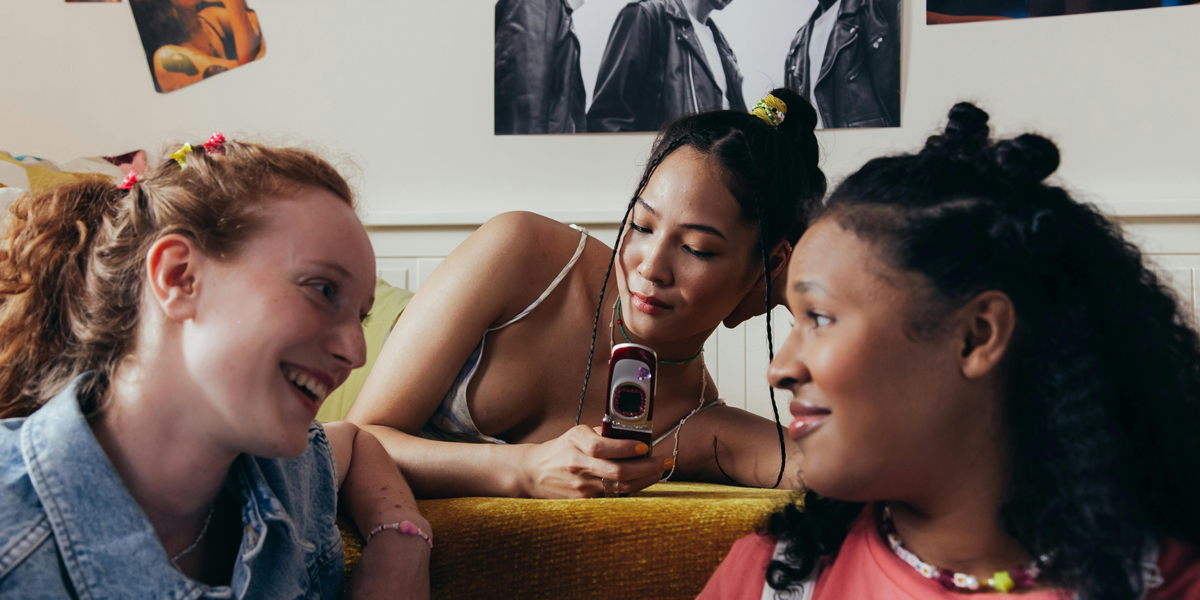
The right to connect
Opinion + AnalysisHealth + WellbeingSociety + Culture
BY Marlene Jo Baquiran 28 JAN 2025
Gen Zs are terrifying: we are the wizards of the digital world that is increasingly alien to the older generations.
We are hooked up by the veins to the ever flowing current of information and all of its chaos and simulacra, often seen as being emblematic of technology gone too far; escapists subsumed to a Matrix-like existence.
The other terrifying thing about us: we’re all mentally ill, apparently. So much so that Jonathan Haidt released a book about us called “The Anxious Generation”, expanding on the most popular explanation for rising mental illness in youth: the infamous ‘phone bad’ argument.
This claim has undeniable legitimacy: studies correlate social media usage with mental illness, including rising self-harm ER admissions for American teenage girls. There is no world in which a teen scrolling TikTok in their bed after a long day at school can defend their attention from a trillion-dollar organisation of world-class optimisers. Our generational psyche has been crafted into a consumer mind by a minority of technocrats.
In short, our generation has been raised into addiction. Understandably, this problem is now starting to drive policy, underlying a social media blanket ban for youth, as is being proposed by the Australian government.
I don’t think I would miss social media necessarily. But when I entertain what it would look like to close the portal to that void world, I do wonder: what then would I build on that empty plot?
My addict attention-span, whittled down to the duration of a good reel, attempts to ground itself firmly into the real world: OK, I’ve wasted so much time. I should focus on work — earning money. Money for what? Perpetual rent, until I can double my salary to buy a house. A house for what? My future family. But it feels unfair to have kids in this future, anticipating worsening climate disaster. Can I even manage a family when I can barely manage my own life? Or, well, this is kind of exhausting… I should relax… I’ll just quickly check Instagram to see if my friend sent something funny…
The checking is an itch. I scratch it compulsively when distracted, anxious, bored, or depressed, thereby gaining short-term relief. But like other types of addiction, while the object of addiction makes it worse, it is not the same as the source. Psychiatrist Gabor Mate’s mantra is: “Don’t ask why the addiction, ask why the pain.”
Perhaps my train of thought seems overly catastrophic — the kind of hysteria to be expected from the ‘anxious generation’. But the content of these anxieties driving addiction has real, material legitimacy, and they are not arbitrary. A home, a community, and a safe climate: these are frequently cited themes driving Gen Z’s anxieties.
They are recurring themes because they are how we connect to the outside world. Johann Hari wrote that the opposite of addiction isn’t sobriety: it’s connection. A physical home is the cradle of our connection to a place; a safe base. A community and friends who know and care for us is our connection to people, allowing us to develop fluid and dynamic social identities. A safe climate represents the connection to any foundational future; a promise that our actions today are and will continue to be meaningful. Therefore, these basics are also our critical defences against addiction — or more precisely, they are the salve for the part of us that is drawn to the escape it offers.
When basic needs for connection have become unattainable fantasies, it is less mysterious why mental illness in youth may not be easily solved by unplugging.
Home ownership is a pipe dream rather than a mundane right in an absurdly land-rich city like Sydney. Neoliberal market logic reigns supreme over the provision of basic needs, treating houses as a class of speculative investment assets over functional shelter. Alan Kohler notes house prices have increased from four to eight times annual income in one generation. This is not just an aberrant property of Australia, but a global crisis as pointed out by the World Economic Forum.
This alienation is worsened by looming climate disasters which can uproot entire homes, as it does so for many people in rural communities and the global south, with its reach to the rest of the world only being a matter of time. Yet while three-quarters of Australians aged 18-29 believe climate change is a pressing problem, only ~50% of Australians aged over 50 do.
The epidemic of loneliness is also a global epidemic, according to the World Health Organisation. The average person has fewer and fewer friends, with Gen Zs feeling more lonely than other generations, including those aged 65 and over. On the flipside, young people increasingly engage in unsatisfying forms of intimacy like non-committal relationships (situationships) and AI personas such as Character.AI — forms of commoditised connection which, similar to social media, are exacerbating symptoms of disconnection rather than drivers.
There is a clear inequality in the opportunities to build physical, social and lasting connections between young people now and the older generations who also comprise most positions of power. Without recognising this structural unfairness, it is too easy to imagine mental illness as a linear consequence of technology, which incidentally has the unfortunate side effect of hysterical social complaints.
But our ‘hysteria’ is Janus-faced: yes, young people may be ungrounded, overstimulated and sensitive — but we are also flexible, intensely curious, and sensitive. Behind our grief is a quiet hope that needs to be understood and nurtured — never belittled. It is correct but incomplete to say that our generation is overly anxious and negative: many Gen Zs often through social media write letters to MPs, courageously reaching for environmental justice. When understood and armed with the right tools for connection and change, our sensitivity is a source of strength.
Fixing ‘phone bad’ with a blanket ban will not fix the root causes of mental illness, particularly for a generation with so few existing tools for coping and connection. Experts on digital media fear that a social media ban will further isolate already-isolated youth, and with social media being a nexus for youth activism, it will only serve to silence youth voices further. Practically speaking, this legislation has also failed to work in other countries. Fundamentally, the escapism of the digital world is driven by the hostility of the real world towards youth.
What the older generations owe us, then, is to form solutions that sincerely integrate the experiences of youth to treat the structural sources of illness: the lack of Gen Z’s physical security, social connection and a future. Technology should be regulated through a framework of harm reduction, recognising its role as an object of addiction.
Lastly, they should recognise that our visible vulnerability is not the sole problem but reflective of the system’s failures; in the age of climate collapse, we are canaries in a coal mine. That does not make us weak, but protectors of what is soft. And if we are no longer willing to create structures to protect the soft, then what, exactly, do we create our society for?
This is one of the Highly Commended essays in our 2025 Young Writers’ Competition over 18s category.

Ethics in your inbox.
Get the latest inspiration, intelligence, events & more.
By signing up you agree to our privacy policy
You might be interested in…
Opinion + Analysis
Health + Wellbeing, Relationships
Duties of care: How to find balance in the care you give
Opinion + Analysis
Health + Wellbeing, Relationships
Want to live more ethically? Try these life hacks
Opinion + Analysis
Health + Wellbeing, Relationships
5 ethical life hacks
Opinion + Analysis
Business + Leadership, Health + Wellbeing, Relationships
Moving on from the pandemic means letting go
BY Marlene Jo Baquiran
Marlene Jo Baquiran is a writer and activist from Western Sydney (Dharug land), Australia. Her writing focuses on culture, politics and climate, and is also featured in the book 'On This Ground: Best Australian Nature Writing'. She has worked on various climate technologies and currently runs the grassroots group 'Climate Writers' (Instagram: @climatewriters), which won the Edna Ryan Award for Community Activism.
Big Thinker: Epicurus

Epicurus (341–270 BCE) was an ancient Greek philosopher and founder of the highly influential school of philosophy, Epicureanism.
In a time dominated by Platonism, Epicurus established a competing school in Athens known as “the Garden”. Many of his teachings were direct contradictions of the teachings of Plato, other schools of thought and generally accepted ideas in areas like theology and politics. He also flouted norms of the time by openly allowing women and slaves to join and participate in the school.
Though he strongly insisted otherwise, dubbing himself “self-taught”, records indicate Epicurus was greatly influenced by many philosophers of and before his time such as Democritus, Pyrrho and Plato.
Theology and Ethics
Two significant departures from the popular ancient Greek thought involved Epicurus’ ideas about theology. In general, he was critical of popular religion, though in a much more restrained way than his later followers.
One departure was his thoughts on the afterlife. Epicurus believed that there was no afterlife, and that any belief in it, especially the idea that the afterlife could involve punishment and suffering, was a harmful superstition that prevented people from living a good life.
“Accustom thyself to believe that death is nothing to us, for good and evil imply sentience, and death is the privation of all sentience; . . . Death, therefore, the most awful of evils, is nothing to us, seeing that, when we are, death is not come, and, when death is come, we are not.”
From Letter to Menoeceus
Another departure was his thoughts on the gods, and specifically their involvement in human affairs, also known as divine providence. Unlike most, Epicurus believed in the gods while simultaneously believing that they were completely removed from the mortal realm and uninvolved in human affairs.
The Epicurean view of the gods was that they were perfect beings, and involvement in anything outside their perfection would tarnish that perfection. The view denies that they exhibit any control over humans or the world, and that they instead function mainly as aspirational figures – beings to admire and emulate.
Both of these departures from popular ancient Greek religion came from his unique hedonistic philosophy. Epicurus believed that the ultimate purpose of philosophy was to achieve, and help others to achieve, certain states of being that characterise the eudaimonic (happy, flourishing) life.
Specifically, he thought that eudaimonia was attained through internal peace (ataraxia), an absence of pain (aponia) and a life of friendship.
This was the basis of his hedonism – unique in that he defined pleasure as an absence of suffering and so had a far greater focus on moderation than what is typically associated with hedonism.
In fact, Epicurus was disapproving of excessiveness generally:
“…the pleasant life is produced not by a string of drinking bouts and revelries, nor by the enjoyment of boys and women, nor by fish and the other items on an expensive menu, but by sober reasoning.”
These ideas informed his theological thoughts. He believed that a belief in the afterlife was superstitious and bad because it was most often a source of fear. Instead of acting morally to avoid the risk of punishment in the afterlife, which causes suffering in the current life, Epicurus taught that we should instead act morally because we will inevitably suffer from guilt or the fear of being discovered if we do not.
Likewise, he taught that while the gods had no interest in the affairs of humans, we should still act morally and kindly because those who do will have no fear, leading to ataraxia.
“…it is not possible to live pleasurably without living sensibly and nobly and justly.”
Pleasure and Desire
As part of his ethical teachings, Epicurus noted different types of pleasures and desires that prevent us from achieving a life free from suffering and trouble.
He was particularly focused on desire because he saw it, like fear, as a ubiquitous source of suffering. He taught that there are three kinds of desires: two natural, and one empty. Natural desires can be necessary (like food or shelter) or unnecessary (like luxury food or recreational sex). Empty desires on the other hand correspond to no genuine, natural need and often can never be satisfied (wealth, fame, immortality), leading to continuous pain of unfulfilled desire.
Unfortunately, like many Hellenistic philosophers, the vast majority of Epicurus’ writings have remained undiscovered, instead pulled together largely through the writings of contemporaries, followers and later historians. Despite this, his ideas have resurfaced throughout the centuries since and influenced the thinking of ancient and modern philosophers alike.

Ethics in your inbox.
Get the latest inspiration, intelligence, events & more.
By signing up you agree to our privacy policy
You might be interested in…
Opinion + Analysis
Society + Culture, Business + Leadership, Health + Wellbeing
Make an impact, or earn money? The ethics of the graduate job
Opinion + Analysis
Business + Leadership, Health + Wellbeing, Society + Culture
Corruption in sport: From the playing field to the field of ethics
Opinion + Analysis
Relationships, Society + Culture
What Harry Potter teaches you about ethics
Opinion + Analysis
Relationships, Society + Culture
